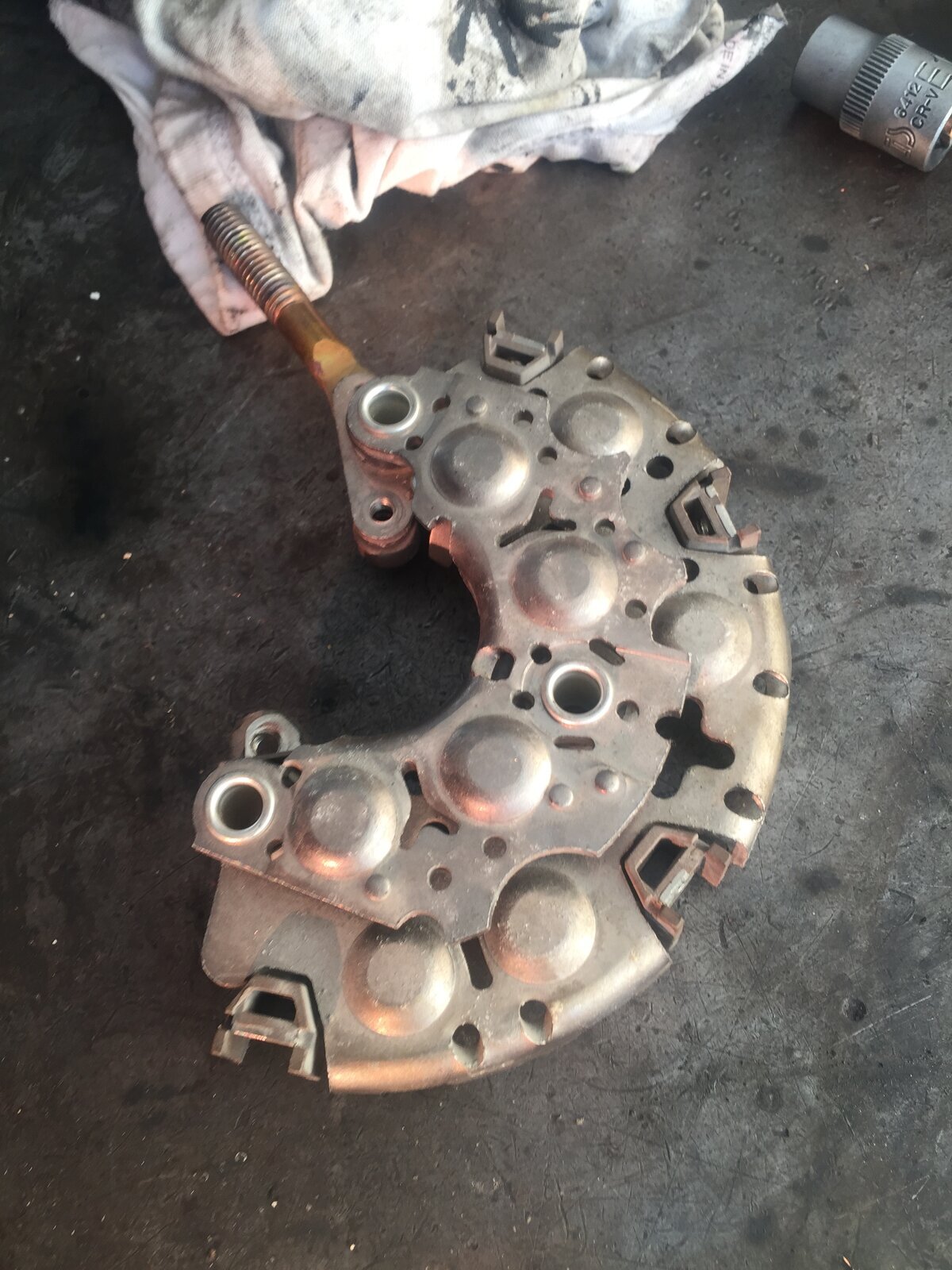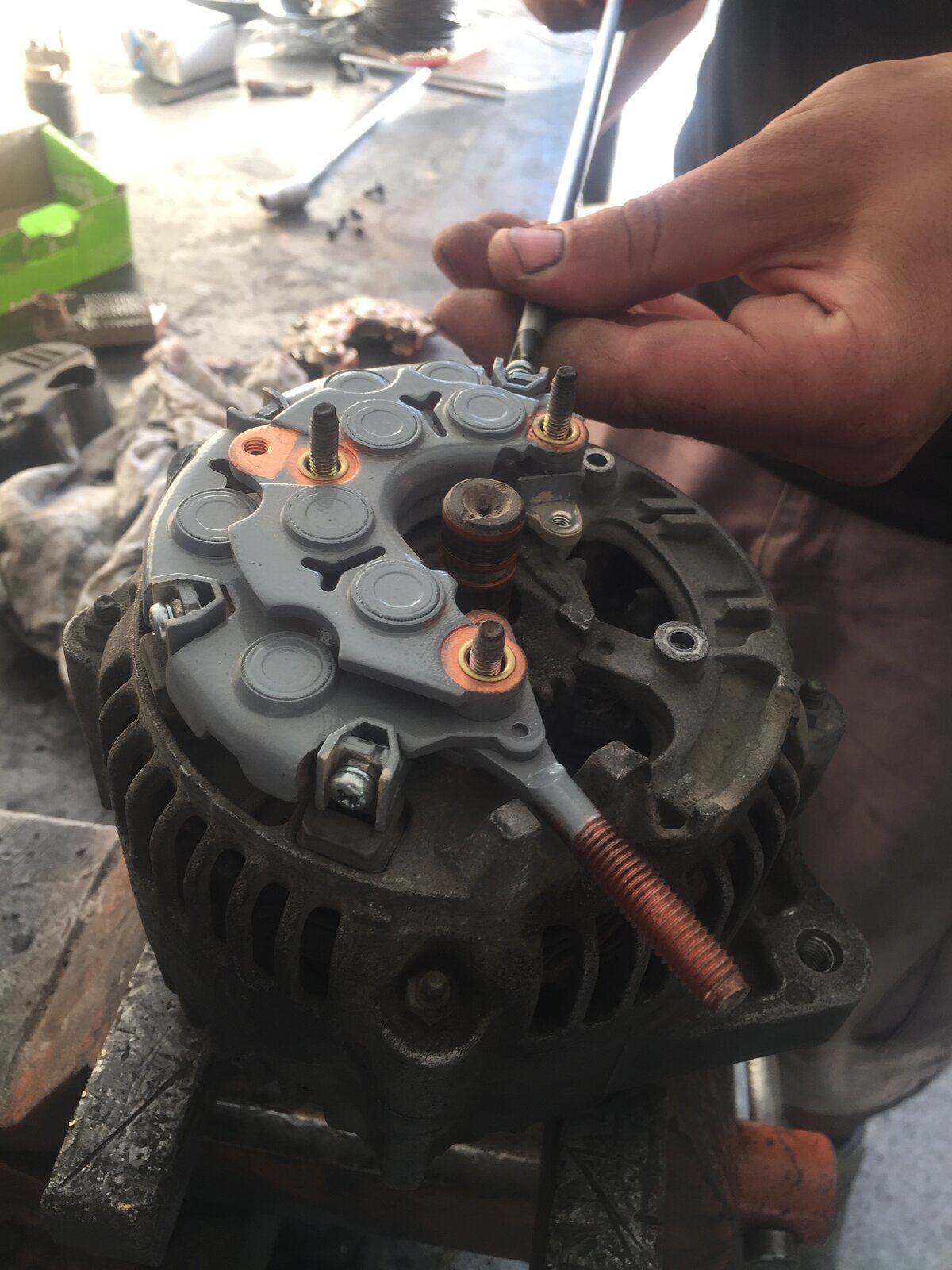First some facts to work from for those (with respect) little or no electrical savvy, and whilst aimed at the stock Land Cruiser 80, this pretty much is the same for any typical car.
When you purchase a battery from a local store it is not fully charged, sure it was fully charged when it left the factory perhaps three or four months ago but by the time it reaches your local shop it has lost some of that charge, so may be at 90% or less? This will depend on shelf time, battery technology, brand, construction etc, so the ageing process has started.
The 12 volt battery is not a 12 volts= battery, it is 12.6+ volts. This is because each cell is a little over 2.1+ volts so X this by 6 =12.6+.
True battery voltage can only be tested by either leaving the battery to stand for a few hours with
nothing connected to it,
or switch on the headlights for a few minutes and then switch off and then test, this will remove the surface or false reading you will get and reflect the batteries true voltage, but whilst that gives you a good idea the battery may be in good condition
it does not guarantee that it is! The voltage may be there to show the multimeter 12+ volts but if there is an internal short inside the battery casing the voltage will drop to nothing once a load such as the starter is placed on it, the cells all need to work together, this is why the 'Green Eye' on many batteries is pretty much useless as it is taking it's specific gravity reading from one cell, the other five could be dead! Again aimed at the 80, after leaving the lights on you cannot test the batteries unless they are disconnected from each other, otherwise this will give you a false reading.
Years ago the connections between individual battery cells were exposed so it was easy to check the connections as the links were easily checked, that has gone. Something else that has all but gone was a way to add water and check the specific gravity (true charge) with a hydrometer to confirm an individual cells condition. This is why the typical battery has less life, we used to check them and add water when we tightened the V belt driving the dynamo and fan... also now gone.
Next, if 12.6 volts is a fully charged battery then 6.3 volts is not a half charged battery, it is a dead battery, and it was dead at 7,8.9 and even 10 volts, if your battery is managing 11 volts there
may be enough to crank and start the engine depending on: Electrical connections/condition of engine/condition of starter/engine temperature/environment temperature/age of engine oil and so forth, so you can see anything less than a decently charged battery and it may not start. Also note that voltage on a weak battery will be pulled down by the glow plug circuit (12 valve) or heater matrix (24 valve) models before you have even cranked the engine.
The 80 with it's batteries connected in parallel when the engine is off presents another problem, if one battery fails it will draw down the other so a dead battery on one side of the circuit will leave you with two dead batteries, hence again the reason to test them individually.
Now to the charging circuit.
When the two 80 batteries are
believed to be fully charged and in good condition as is the engine etc, you crank the engine and it starts, you have taken a significant amount of power from the batteries which is now to be replaced by the alternator, if you drive say five minutes down the road to the shops and switch off that power may not be replaced why? Because it depends if you sat in traffic/you were on a motorway/was the heater on. the AC. the latest stereo etc. It is funny how the two journey types differ and yet neither have recharged the battery to it's pre start condition.
An 80 alternator only charges up to a specific RPM circa 6000? So 1000 engine rpm will equate to say 3000 alternator rpm (pulley ratio), so driving at a speed that keeps the engine at 2000 rpm means the alternator (now at 6000 rpm) is maxed out. So a five minute drive at 70 miles an hour will not yield much more charge than an engine at 1500 rpm driving through town. When the five minute journey is complete you do a bit of shopping and come out and restart and return home. Those batteries will not have had enough time to become fully charged. Remember I said
believed to be fully charged, well it is unlikely they were, the battery voltage will have already been pulled down by simple things like temperature, remember they like 25*C, and now we can add in typical week in the life of your 80, you went to the shops to or three times, perhaps started and stopped the engine two or three times in town, perhaps started it to move it out of the way of another car on the drive? Perhaps even jump started your neighbours Land Rover

and then parked it up with the alarm set and stereo and clock memory adding some parasitic drain on those batteries over a few days, so now it is easy to see how your batteries life can be shortened........because it/they is/are rarely if ever
fully charged.
Something else which seems to be misunderstood.
A battery will only take as much amperage as it can depending on it's internal resistance, a low battery but in good condition might take 30 amps or more but only for a very short period of time, this soon reduces down to say 10 amps where it tends to hold for awhile and then will continue to reduce until less than 1 amp, that will take hours of driving to get it to that stage, again pointing out how difficult it is to get a battery to a
fully charged condition, having a 100 amp or even a 500 amp alternator will not charge the battery any quicker, as long as the alternator can supply the current the battery needs then that is enough to get it charged, whilst it is amps that charge a battery, those amps need to be available for a sufficient amount of time for the battery to recoup a decent charge.
In a nutshell, a typical car battery lives it's life at around 80% - 85% % of it's fully charged condition, without the ability to check the cell gravity, or the water level we are no longer prompted to grab the battery charger and leave it on charge overnight, hence the need to maintain a decent charge on them, without that kind of maintenance, this is why typical battery life has fallen over the last few years.
regards
Dave







